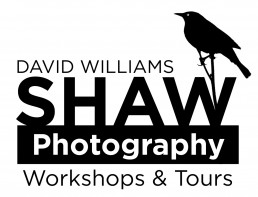March is Popular but is it Best?

Most photographers come to Alaska to shoot the aurora (northern lights) during the late winter; March, usually. And there is good reason for that. March has little precipitation in interior and northern Alaska, providing good odds for clear skies. And since auroral activity peaks around the equinoxes, it’s a formula for success. That combination is why I time my two Arctic Aurora Workshops for mid-March and early April each year. (Speaking of which, I’ve opened a couple of additional spaces on my 2020 trips, you should totally sign up.)
But March and early April aren’t the only options. After years of photographing the aurora with a snow-covered winter landscape beneath, I’m ready for some variety. And that’s part of why I enjoy fall aurora photography. For a month or so each autumn, our nights get dark enough, and the aurora activity is high enough that you can mix open water, reflections, and even autumn colors with the northern lights. It can be a magical combination.

So what’s the drawback of fall? Weather. September and October get 3-4 times the amount of precipitation as March and early April. While aurora activity is as good in the fall as it is in the spring, the show is more frequently blocked by clouds.
Is that a deal breaker?
It depends on how much time you have to spend. If you are coming for a short trip, just a night or two, then you are much better off visiting in mid to late March or the first couple of days of April than in September or October. However, if you have several days, and especially if you are interested in more than just aurora photography, then autumn can be a great option. In the fall, temperatures are milder, you can time your visit to coincide with fall colors (late August to early September), and wildlife tends to be more active and visible than during the late winter. If it all comes together, you can end up with the perfect visit to Alaska.

Putting that all together is why I also offer a fall northern lights trip: Autumn and Aurora in the Brooks Range. Following a similar 5-day itinerary to the late winter workshops, this trip has a dual-emphasis on autumn daytime landscapes and, of course, the aurora.

So which is right for you?
It depends on your priorities.
If photographing the northern lights is your only goal, you aren’t scared of the cold and snow (and have the right gear), and you want to maximize your odds of aurora success, then come in March to the first week of April.

However, if your photographic goals are more diverse, you want the opportunity to see Alaska during its most beautiful season, encounter wildlife, or are looking for a more complete visit to the state, then you really can’t beat fall. It’s quite possible to create an autumn itinerary that would include the aurora borealis, brown bears, polar bears, bright autumn landscapes, and even whales, otters, sea lions, and tidewater glaciers- if you’ve got the time and resources for such a trip.
And once again, in this post, I prove myself to be the reigning king of the non-answer! But isn’t that always the way it is with photography? Just like selecting your camera settings or composition, choosing the best time of year for a trip is a personal decision.

But I’m here to help! Feel free to contact me with your questions, or leave a comment below, and together we can find the best time of year for you to get those coveted images of the aurora borealis.

You must be logged in to post a comment.